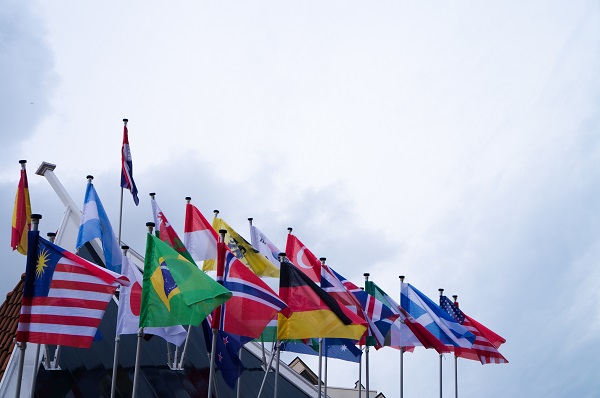Recommended
The COVID-19 pandemic revealed a fundamental lack of preparedness around the world, even among countries that scored well on existing preparedness ratings. New investment is needed to assure that we are better able to identify and manage pandemic threats in the future. Momentum is building for significant investment in pandemic preparedness (see the recommendations of the G20 High Level Independent Panel (HLIP) on Financing the Global Commons for Pandemic Preparedness and Response, the Independent Panel on Pandemic Preparedness and Response, and the Pan-European Commission on Health and Sustainable Development.) This will likely require a major financial intermediary fund (FIF), potentially disbursing $10 billion annually, using a range of instruments from grants to credits to guarantees, and mostly financed by governments as well as philanthropic contributions.
There are live debates as to where such a fund should be housed and the extent of its mandate. No doubt those will surface during Wednesday’s hastily convened COVID Summit. In service of its ultimate aim of strengthening global health and economic security, there are functions the international community will want to prioritize, such as assuring verification of government surveillance data self-reporting, aligning fund disbursements with countries’ on-budget spending, and taking risks and allowing for failure in development and early manufacturing of medical countermeasures. Regional rather than global entities may take leadership over key activities.
Regardless of the institutional home and scope, there are four essential attributes to build into the FIF’s design, drawing on lessons learned from existing global funding entities and the broader global governance community. While these elements are intuitive in theory, they require deliberate design and commitment to ensure that they are integrated effectively into the ultimate FIF.
1. Transparency
To retain the confidence of donors, partner organizations, and the global community, any fund must embed transparency into its DNA. Such transparency provides confidence around core investment decisions, enables necessary at-risk financing, and builds mutual credibility. Transparency should extend to all major components and decisions of the financing facility, and data should be made publicly available in a timely and usable fashion to measure progress of the financing facility against an agreed-upon set of goals and indicators. Specifically, there should be:
-
Transparency of funding received (allowing for comparison with public funding commitments)
-
Transparency of funding processes and decision making
-
Transparency of funding commitments (who is receiving money and on what terms, e.g., to help assure that those approving funding are not overly privileging their constituencies)
-
Transparency of reporting
2. Inclusive representation
FIF governance should not be driven solely by the largest donors, nor the interests of the host institution (assuming the FIF is not a stand-alone entity). Low- and middle-income country governments (ideally covering both health and finance ministries) and independent civil society voices from the health security sector need to be part of setting the strategic direction of the fund and informing its initial design. The facility should avoid tokenistic representation - success will depend on drawing on the expertise and insight of multiple stakeholders. It is an open question how the governance architecture might separate responsibility for providing strategic direction from responsibility for funding decisions, as was recommended by the G20 HLIP. (For example, the Global Financing Facility separates those roles between an Investors Group and a Trust Fund Committee.)
Board* Representation by Sector
| Fund | Civil society/NGOs | Government representatives | Private sectors | Private foundation | Financers | Multilaterals | Decision making | Total members | ||||||
|---|---|---|---|---|---|---|---|---|---|---|---|---|---|---|
| Global South | Global North | Unspecified | Total | Global South | Global North | Total | Unspecified | Unspecified | Unspecified | Total | Total | |||
| Global Fund | 3 | 3 | 6 | 6 | 12 | 1 | 1 | 2 | 3 | Yes | 20 | |||
| Global Partnership for Education | 2 | 1 | 3 | 7 | 8 | 15 | 1 | 1 | 2 | Yes | 20 | |||
| Green Climate Fund | 12 | 12 | 24 | Yes | 24 | |||||||||
| Global Financing Facility | 1 | 1 | 9 | 7 | 16 | 2 | 2 | 2 | 6 | 6 | No | 28 | ||
*The boards of The Global Partnership for Education, Global Fund and Green Climate Funds are governing bodies with decision-making power. The Global Financing Facility, however, is governed primarily by a Trust Fund Committee comprised of Bank and donor representatives. The “board” referred to in the table above, is an Investor Group with the responsibility of strategically advising the Trust Fund Committee.
3. Accountability
The FIF structure should encourage accountability for fund mobilization in line with the Biden administration’s push on “Calling the World to Account” for delivering on targets. With large sums of money the potential for leakage or inefficiency is significant, as is the potential for conflicts of interest. At the same time, you need the capacity to move fast and innovate or reallocate when needed. Don’t sacrifice agility for bureaucracy. This suggests that the board (or equivalent structure) should set principles and demand regular updates without litigating every funding decision. The emphasis should be on assuring that funds result in improved preparedness outcomes. What could this look like in practice?
-
Funding requests should be subject to approval against clear criteria (as per the European Union’s Recovery and Resilience Facility) or objectives. For example, objectives for building health security need to be more meaningful than, say, creating an emergency operations center. Instead, proposals like the 7-1-7 target for outbreak detection, notification, and response could be used as an organizing principle, target, and accountability metric, for example.
-
There should be a process to withhold future funds for failure to adequately measure outcomes agreed between the funding entity and recipient. Countries that will need the external funding most will likely have the lowest capacity, so what matters more is measuring results accurately, rather than the outcomes themselves which will take time to improve. Accurate, complete, and timely measurement of infectious disease cases and deaths in the public domain is the starting point for rapid detection and control of outbreaks.
-
Given the size of funds involved, the facility needs to have strong fiduciary controls, extending, for example, to open contracting requirements for recipient spending. Using existing entities well-tested policies and approaches will make sense.
-
Regular evaluations of the FIF’s performance against its goals should be conducted, with results shared publicly and mechanisms in place to course correct if evaluations show areas of concern.
There would need to be fall back measures to enable swift spending in the event of a pandemic (given the all too obvious limitations of the current system). These could be in line with the IMF urging countries to “spend what you can, but keep the receipts,” in response to the COVID-19 pandemic. Proposals for enabling surge spending during major epidemics or pandemics are part of the HLIP report.
4. Non-government eligibility for direct funding
The pandemic has demonstrated the importance of non-state actors, both in terms of surveillance and mobilizing community responses. It is a mistake to be wholly dependent on governments for health security without enabling independent scrutiny and civic actor networks, expertise, and credibility. Sachs and Schmidt-Traub found that disbursement of funds to diverse stakeholders, including civil society organizations, accelerated innovation, and helped spread best practices.
Any new facility should have a dedicated funding for non-governmental entities or networks designed to be fit for purpose, i.e. avoiding burdensome application and reporting requirements, the ability to provide multi-year funding, and a focus on results (with support for measurement and evaluation). The Global Fund sets precedent for civil society funding and the Global Partnership for Education has a civil society advocacy funding window. Both can be sources of learning in the design of this fund.
The approval of funding for non-state actors should not be subject to government veto. For example, if a government wishes to receive direct loans or grants from the facility it must also agree to the possible funding of civil society groups within the country. The pandemic has been leveraged for repression of independent civil society and media voices to the detriment of effective pandemic management and society more broadly. This FIF should enable civil society to effectively partner to strengthen preparedness, not being wholly reliant on government as a source of information or action.
Despite a proliferation of global financing facilities on different thematic challenges over the past decade, innovation in governance structures has not kept up. However, the lessons from these facilities, as well as experiences and evidence from the transparency and accountability field in providing oversight and buy-in from all stakeholders, can provide a valuable roadmap for new funding entities. Here’s hoping that any new pandemic preparedness FIF resulting from tomorrow’s summit can become the model for fit-for-purpose fund governance.
Disclaimer
CGD blog posts reflect the views of the authors, drawing on prior research and experience in their areas of expertise. CGD is a nonpartisan, independent organization and does not take institutional positions.






